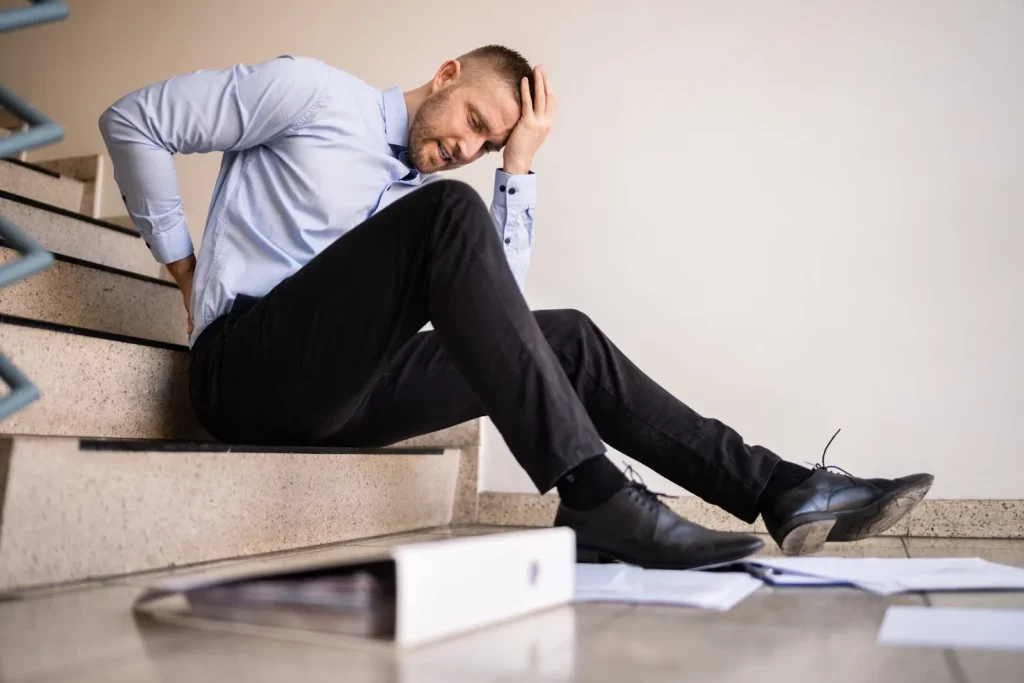
Source: Willens & Baez, Personal Injury Lawyers
When you slip and fall in a public place like a grocery store or your workplace and only incur a minor injury, you may laugh it off and say you’re just clumsy. But what feels like a personal mishap could actually be the result of someone else’s negligence. Property owners have a legal duty to keep their premises safe. When they ignore safety hazards or fail to fix known issues, they can be held responsible for any injuries that occur within their properties.
In 2022 alone, over 8.5 million people ended up in emergency rooms due to fall-related injuries. Unfortunately, proving fault in these cases isn’t always easy. Unlike car accidents, where the fault might seem obvious, you need to show that the property owner knew (or should’ve known) about the danger and didn’t take proper action.
That’s why understanding the legal elements necessary to prove liability can help you assess whether you have a valid claim and what steps to take to protect your rights after an accident. That’s what this article is for, so read on.
Gather Evidence Immediately After the Accident
In car accidents, most pieces of evidence aren’t easy to get rid of, such as car damage, road bumps, or skid marks. But for a slip-and-fall accident, it’s a different story. Evidence can disappear quickly as the property owner may have enough time to wipe off the spilled liquid, hide the loose rug that caused your accident, or even get rid of the bystanders near the premises.
So, right after your accident, you must act fast and take photos or videos of the exact spot where you slipped and fell. Capture the hazard itself, then include wider shots to show the surrounding area. If you’re physically unable to do this, ask a bystander for help. Next, document your injuries to create a timeline that ties your injuries to the fall.
Lastly, make sure to report the incident to the property manager or owner. Ask for a written incident report and keep a copy for yourself. If you’ve been badly injured in a fall, your hired lawyer will use this official record as crucial evidence when proving negligence later on.
Identify the Hazardous Condition and Its Origin
Just because you slipped and fell on public property doesn’t mean it automatically qualifies for liability. You can only establish liability if you can successfully demonstrate that the property owner was aware or should have been aware of the dangerous condition on their property and failed to fix it.
Say, a grocery store employee mopping floors creates a temporary hazard. They’re only liable if the staff did not put up warning signs or if the spill was left unattended for too long. Meanwhile, a broken stair railing in an apartment building suggests the landlord ignored a persistent issue.
If the hazard was present long enough for the owner to have dealt with it, that strengthens the case for liability. You can prove this by looking into maintenance logs, inspection records, or any previous complaints.

Understand Comparative Negligence Laws
In some states, your compensation may be reduced if you’re somehow responsible for your own danger. Say, you were texting while walking and didn’t see a ‘Wet Floor’ sign. A court might find you 20% responsible, meaning you’d only receive 80% of the awarded damages.
These laws aren’t the same everywhere. In states like California and New York (two of the twelve that follow pure comparative negligence), you can still recover damages even if you’re 99% at fault. However, you’d only get 1% of the total compensation. That said, you should anticipate this type of defense early.
You must show that you took reasonable steps to protect yourself, like wearing proper shoes or sticking to marked walkways. If the hazard was truly unavoidable, such as a blocked exit forcing you into a dangerous area, that evidence could help reduce or even eliminate your share of the blame.
Consult Medical and Legal Experts
Medical records are absolutely essential. Thus, you should seek treatment immediately, no matter how minor you think your injuries are. Putting off care can give insurance companies a chance to argue that your injuries weren’t serious or weren’t caused by the fall.
For instance, there’s a recent case where a woman sued Eataly Boston after slipping on a piece of prosciutto and fracturing her ankle. Her medical expenses exceeded USD$ 7,500, covering hospital visits and physical therapy. Situations like this really emphasize the importance of getting timely care and having documented treatment when it comes to building a solid claim.
In complex cases, expert witnesses can really help to back up your case and prove their negligence. Engineers might come in to discuss issues with stair design, while safety consultants could shed light on how the property didn’t meet safety standards. Attorneys who focus on premises liability know how to bring these experts into play to support your claim and boost your chances of getting fair compensation.
File a Lawsuit Before the Deadline
Every state sets a statute of limitations for personal injury claims. For instance, New York gives you three years from the accident date to sue, while other states may only give you up to two years. Missing this window forfeits your right to sue. Thus, you need to start the process early because gathering evidence and filing paperwork takes time.
Key Takeaway
Proving liability in a slip-and-fall case demands swift action, thorough evidence, and a clear understanding of negligence laws. From documenting the scene to consulting medical and legal experts, each step builds a stronger argument for compensation. While the process can feel overwhelming, consulting experienced legal professionals ensures you don’t face it alone and increases the likelihood of a fair outcome.